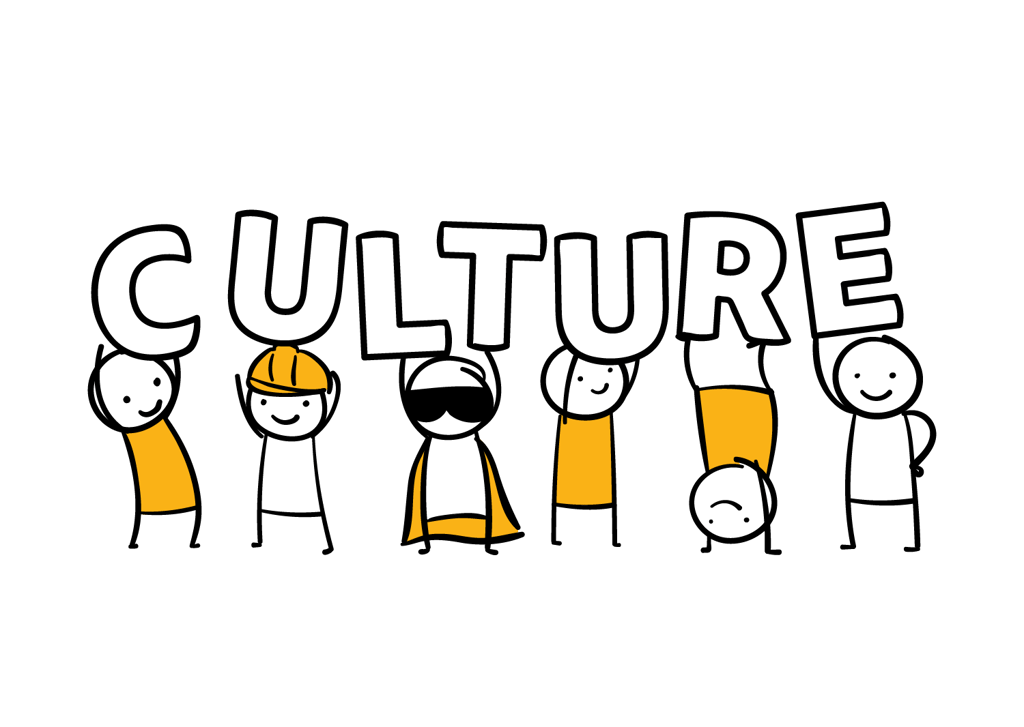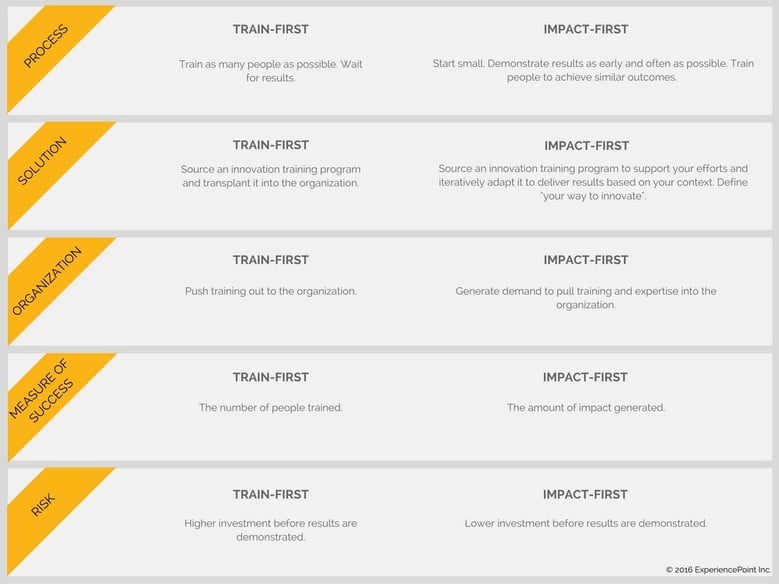
(4 min read)
You’ve heeded the rallying cry to create a new culture of innovation. You’ve established the foundation for this new culture by cultivating new mindsets and creating the conditions to support the new behaviors. So why haven’t those new behaviors and actions become part of the organizational DNA?
New Ways Require New Commitment
With apologies to the Old English proverb, you can encourage new mindsets and methods, but you can’t make people adopt them. While some people may publicly comply and try new methods for a short period of time, compliance doesn't work when trying to inspire new mindsets. Embracing a new way of looking at the world takes personal commitment. The water must be desirable for the horse to drink.
The traditional approach to embedding new mindsets and methods is compliance-based, typically starting off with training. However, if the mindsets and methods are new and unproven in the organization, participants in the training program will likely view the process with skepticism. They’re looking for you to convince them of why they should adopt these new ways.
As a result, people often leave training with varying levels of commitment and capability while burdened with the added personal responsibility to demonstrate results. With this train-first/impact-later approach, the outcomes rarely live up to the hype.
The alternative is an impact-first approach. The goal of impact-first is to demonstrate results as early as possible. It starts smaller, with several project teams who learn innovation mindsets and methods and apply these to real projects in a highly structured and supported way. As these initial project teams work through the innovation process, they uncover organizational barriers, adapt the approach to their existing culture and generate pockets of excitement and excellence. When that happens, success stories follow, creating commitment, momentum and demand to pull these new ways into the organization. That’s how you create evangelists, and that’s how you accelerate adoption.
What’s really exciting is that it doesn’t necessarily take a huge investment or undertaking to make the kind of impact that cascades to broader application and commitment. We’ve seen countless examples of projects of varying sizes and scope that have become beacons for others to follow, generating organic growth from all sides. One such story is that of Australia’s Neighbourhood Justice Centre (NJC).
A Stepping Stone to Change
The NJC in the City of Yarra comprises 20 independent but interdisciplinary treatment agencies that work hand-in-hand with the court and community engagement programs to reduce crime, increase community safety and create savings through fewer cases in the system. In the area of family violence, the NJC is making a difference in the lives of people not just within its own community but, potentially, throughout the world.
And it all started with an online form.
The NJC team realized that people who experience domestic violence and seek an intervention order were required to fill out “confusing paper forms,” as Louise Bassett described them to us. “There’s little empathy for the person filling them out. They were written to meet the needs of the administrative staff and not designed for traumatized people trying to seek help. We wanted to turn this paradigm around.”
As the team began to move more of its information online, it decided to make some needed changes to this form, applying a human-centered design approach to addressing the problem. In the beginning there was little interest from the broader justice system.
“They viewed the form as a low priority. But this allowed us to experiment and develop a prototype quickly, in conjunction with local family violence services and survivors.”
Once the NJC had a live pilot, the timing was auspicious. Victoria’s Royal Commission into Family Violence had been looking into reform needs of the family violence system when it saw the NJC’s new online form.
“They really liked the approach, so they made the recommendation to implement the online form statewide,” Louise says.
NJC applied for State government funding to roll the form out to other courts and to conduct service design work to ensure the entire process would be more human centered and less traumatic for those seeking intervention—as well as more effective for the court staff and organizations involved in delivering those services. Additional matching funding has since been confirmed, which will enable the NJC to expand to 11 more courts and receive additional money for trying innovations around remote service delivery. Meanwhile, inquiries and interest pour in from other areas.
A simple form became the catalyst for far-reaching impact.
“When people are trying to find solutions and options for big issues, and there’s something tangible to actually look at and demonstrate these approaches, you can move people along more quickly,” says Louise. “Because we had a product ready when the Royal Commission began, the online form was like a stepping stone—a way to get broader change in the way services are delivered.”
So how can you get started developing stepping stones within your organization? Here is a helpful framework for some inspiration!

Are you ready to talk about harnessing the power of innovation in your organization? Book a Meeting to learn about our innovation workshops.